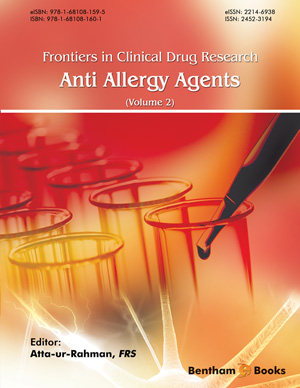Abstract
Allergic rhinitis (AR) is characterized by Ig-E mediated inflammation of the nasal mucosa and paranasal sinuses [1]. Classical symptoms of AR are “watery nasal discharge (rhinorrhoea), nasal itching, nasal obstruction and sneezing”. Pathophysiological pathways of AR are triggered with the repeated exposure of the allergen with the sensitive nasal mucosal lining. After the interaction of “antigen” and “sensitized mast cell”, immediate hypersensitivity reaction occurs and various preformed and newly produced molecules became released. To understand these cellular and molecular and even chronobiological bases of AR is crucial to maintain optimal and satisfactory results on the pharmacological treatment of AR. While “systemic or intranasal antihistamines, intranasal corticosteroids, leukotriene receptor antagonists, topical anticholinergics and mast cell stabilizers” have been shown to be superior than placebo in the treatment of AR, other drugs such as “decongestants, mucolytics, saline” can be used in order to achieve temporary and symptomatic relief. Besides these much known medications, numerous experimental and clinical studies are ongoing about capsaicin and recombinant-humanized-monoclonal anti-IgE antibody in the treatment of AR. Immunotherapy is a good alternative for the selected patients who are resistant to allergen avoidance and medical treatment and shown to be sensitized to a specific allergen. In this chapter, we aimed to discuss pharmacological treatment options of AR and review the literature in the light of the recent developments and researches in the field of AR. We also aimed to overview some important and updated consensus reports such as “Allergic Rhinitis and its Impact on Asthma” (ARIA) in the beginning of the chapter to summarize the current treatment strategies against AR. Finally we highlighted a section about the treatment of pediatric AR patients to mention the differences between adults and children.
Keywords:
Allergic rhinitis, ARIA guideline, immunotherapy, medical treatment.

